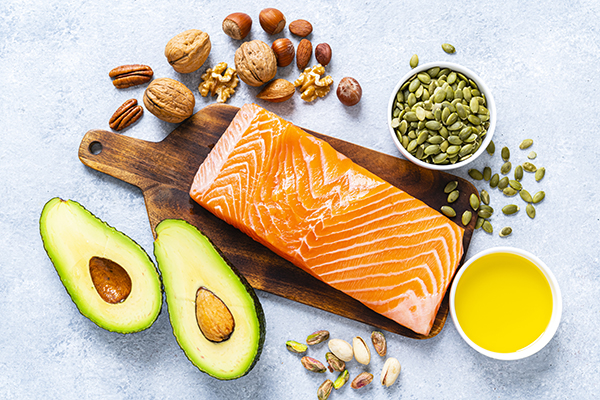Since 2016, the Food and Drug Administration has been developing a new definition of "healthy" and how that can be communicated by an on-pack symbol. The goal of the symbol is “to help consumers make more informed dietary choices.”
FDA is currently collecting information via surveys and focus groups in response to proposed symbols. These symbols could be voluntarily used by food makers to inform consumers that their products are “healthy,” if the products meet the FDA definition of healthy.
The Recent History of “Healthy”
FDA last defined the term “healthy” in 1994. Then, healthy foods had to be low in fat, saturated fat, cholesterol, and sodium. They also needed to contain at least 10 percent of the recommended daily value of either vitamin A, vitamin C, iron, calcium, protein, or fiber.
Fat and cholesterol were the “bad boys” in the 1990s. Foods which we now regard as healthy, such as nuts, salmon, and avocados, were too high in fat to be called “healthy” back then. Obviously, nutritional science has changed over the past 20+ years. Fat is no longer the culprit; the new “no no” is added sugar.
Yet the rules still existed. Enter KIND. In 2015, the FDA issued a warning letter asking the company to remove “healthy” from its labels. The brand complied. But eight months later, the company filed a citizen’s petition requesting that FDA redefine “healthy.”
FDA realized the time was right. It was updating Nutritional Labels and Nutrient Content Claims. FDA started a public process to update the "healthy" nutrient content claim for food labeling to be consistent with current nutrition science and federal dietary guidelines. It would focus on healthy dietary patterns and the food groups that comprise them, the type of fat rather than the total amount of fat, and the amount of added sugars in the diet.
In March 2017, FDA held a public meeting. More than 100 industry and consumer advocates testified, including the Specialty Food Association. SFA said that “’healthy’ on a food label should recognize and promote eating patterns and life situations, in a complete diet or lifestyle context rather than in a nutrient or single food-focused context. What we eat, how and when we eat, even with whom we eat, and our lifestyle influences what is ‘healthy’ for a group or an individual.”
The “Healthy” Symbol
The FDA also began to develop a symbol that the industry can voluntarily use on food products that meet an updated “healthy” definition. FDA reviewed front-of-package nutrition-related symbols and conducted a series of focus groups to test concepts and draft FOP symbols.
In May 2021, FDA issued a procedural notice on the preliminary quantitative consumer research it plans to conduct. A second notice was published in March 2022, with comments due in May.
Here are some of the questions and concerns expressed:
• No one food can be deemed as “healthy.” Overall diet matters more than individual foods.
• The symbol could affect the sales of foods with “healthy attributes” yet do not meet the definition of “healthy.”
• The “healthy” symbol will be used as a marketing tool and could favor larger manufacturers.
• FDA should also warn about products with “unhealthy” ingredients, employing a traffic light or other warning system.
• The research on the symbols is premature because FDA has not yet revised its regulatory definition of “healthy.”
• Symbols should not have the word “FDA” as that could imply an endorsement of the product.
FDA will consider these and additional responses from the second notice. The food industry is likely to eventually see a “healthy” symbol that food manufacturers can put on pack but that is still months, probably years, in the future.
Ron Tanner is president of Tanner Food Group

